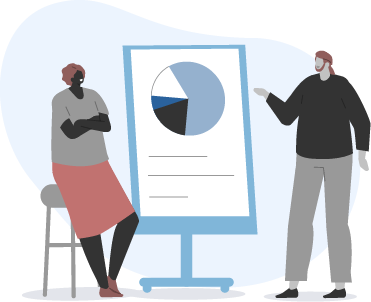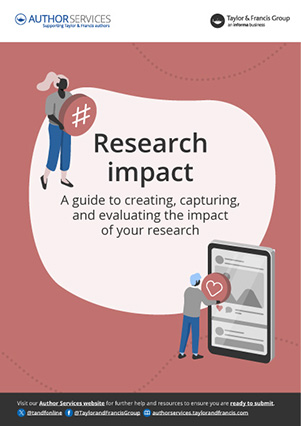Getting your research into the European Parliament
Research plays an important role in the European Parliament. That’s because it can help Members of the European Parliament (MEPs) and stakeholders scrutinize proposals from the European Commission, the ‘government’ of the EU, examine pressing issues of the day and pass laws.
The societal challenges that they deal with are increasingly complex, so policy makers need to rely heavily on new, reliable and accessible knowledge.
At the same time, getting research into parliament is important for individual researchers. It’s one of the ways to demonstrate the societal impact of their research, which is high on the agenda of universities and research funders and will be even more important in the years to come. Governments are also increasingly asking higher education institutions to show how public money spent on research improves society.
So, what are the different ways in which research can enter EU parliament? What steps can you take to help your research influence EU policy matters?
Read our how-to guide to getting your research into Parliament, brought to you by Taylor & Francis and Sense about Science.
If you’re a researcher interested in UK policy then you should also check out our guide to getting research into the UK Parliament.
Publishing tips, direct to your inbox
Expert tips and guidance on getting published and maximizing the impact of your research. Register now for weekly insights direct to your inbox.
What are the routes into the European Parliament?
There are a number of ways that research enters the EU Parliament. These range from the formal to the more ad hoc. Policy making is messy and the way in which evidence enters the European Parliament are diverse and flexible. However there are a number of structures and services which have the mission to gather evidence and expertise to inform EU policy. So, here’s more information on each of these:

These aren’t the only routes by which research enters into Parliament. Other paths include: via correspondence with individual Members or their staff, through meeting at events, and via a third party such as a charity, think tank or evidence broker.
Top 10 tips
So, what can you do to help get your research into the European Parliament? Here are our ten top tips.
Making connections
Be visible
Be seen online or at events, so that policy makers can find you. Use twitter or write a blog. Make sure your contact details are easy to find.
Find the movers and the shakers
If you want to influence policy, you have to invest in finding out who is taking the policy decisions. Policy engagement is a long-term process, not a one-time activity. Sign up for public consultations and newsletters from the EU institutions, your national Academy or scientific society and relevant NGOs. Follow policy makers and MEPs on twitter, go to events.Find your allies
Many NGOs and lobby organizations are well connected and can introduce a new expert. Team up with other research fields, such as economists and behavior scientists.Use networks
Find out if your institute has an outreach officer or even a Brussels office. Contact the policy officer of your scientific society or professional association.Find your MEP
Someone is representing you in the EU. A lot of MEPs are very keen to hear from constituents so find out who your representative is, or contact an MEP who you have affinity with and build a relationship.

Presenting research
So what?’
Put yourself in the mind of a policy maker. Why should a policy maker care? What is the policy problem that your research can help to solve? Don’t tell policy makers what you want, ask them what they need.
Find out where your topic is in the policy cycle
A useful tool is the legislative train. Is the European Commission writing a proposal on this theme? Then respond to the public consultation. Is your topic not on the policy agenda yet? An MEP can ask a parliamentary question.Don’t expect policy makers to understand your research
Try instead to understand the policy making process, so that you can tailor your research for the policy context. It may take some effort, but policy is easier to understand for you than your research is for politicians.Be brief
Use short key messages, referring to more substantial evidence with links. Or use visuals: a picture can paint a thousand words (and save time and space).Provide context
Your research will never respond to the entire policy question, so try to understand the bigger picture of the problem that your research is looking at. Be honest about limitations and caveats.

The view from MEPs
We asked MEPs their view on why it’s important for researchers to be engaging with EU policymaking. Here’s what they said:
Jan Huitema, Member of the European Parliament
Anonymous, Member of the European Parliament
Julie Girling, Member of the European Parliament
Join the Voice of Young Science network
Sense about Science supports early career researchers across Europe to play an active role in public discussions about science. Do you want to get involved in one of our campaigns or join a workshop? Then sign up for the Voice of Young Science network.
Are you interested in influencing UK policy? Then read our guide on getting research into UK policy.

Acknowledgements
We’d like to thank the Joint Research Centre, the European Science Media Hub, the EP Research Service and SAPEA (Science Advice for Policy by European Academies) for contributing to this guide. Special thanks to the people who have answered specific questions, provided feedback over email or at user testing as we developed the guide: Hannah O’Kane, Hannah Behrens, Didier Bourguignon, Andrew Flagg, Rory Kelly, David Mair, Milena Raykovska, Susanna Streubel, Svetla Tanova-Encke, Imogen Tyreman, Toby Wardman.


